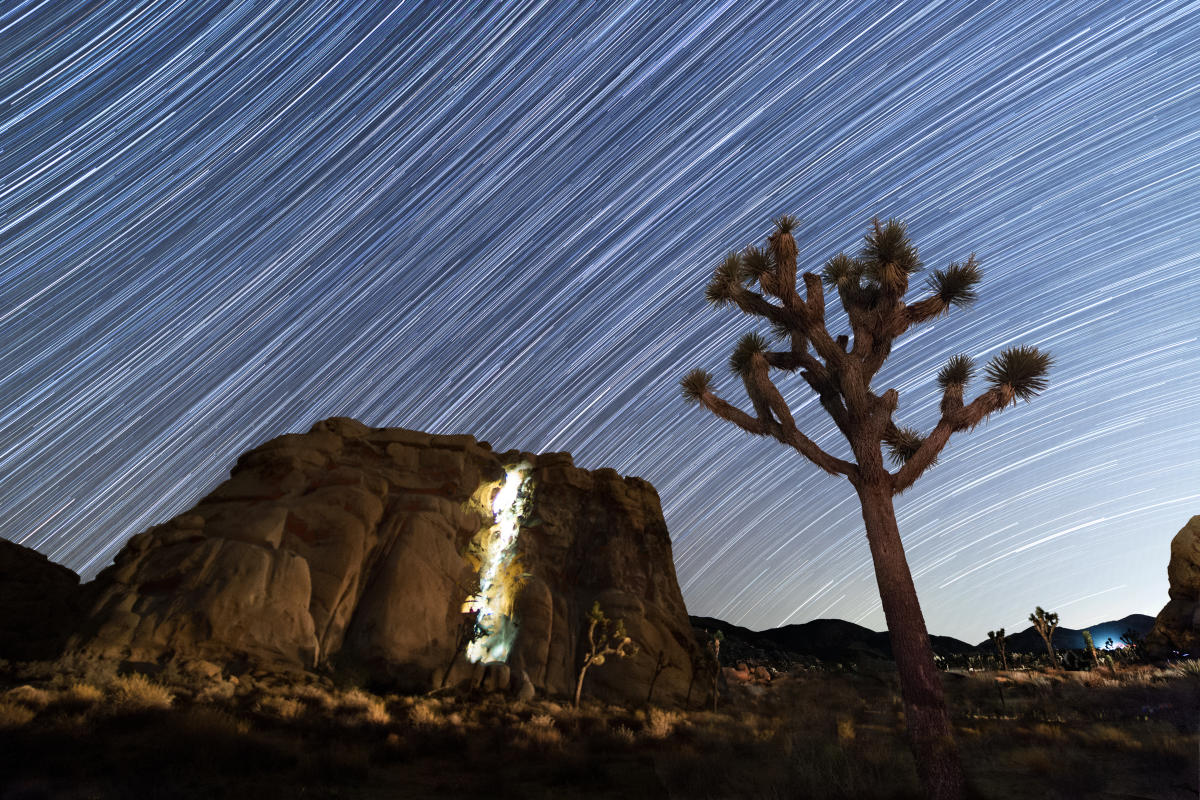Fall in Twentynine Palms is the perfect season for stargazing, offering crisp, clear nights to marvel at the wonders of the cosmos. From constellations and supermoons to rare celestial events like solar eclipses, this is the time to experience the magic of the night sky in Twentynine Palms. Ready to plan your trip? Grab your telescope and explore our guide to the must-see astronomical events happening this fall!
Celestial Events to Watch For
September 17: Partial Lunar Eclipse
On the evening of September 17, the full moon will partially slip into Earth’s shadow, creating a striking partial lunar eclipse. As the shadow gradually covers the moon, stargazers in Twentynine Palms and Joshua Tree National Park will be treated to a mesmerizing view, especially as the moon turns a darker shade during the peak of the eclipse. This event offers a unique opportunity to observe the changing light and shadow across the lunar surface in the clear desert skies.
October 2: Annular Solar Eclipse
The annular solar eclipse on October 2 will be a breathtaking sight as the Moon passes in front of the Sun, creating a "ring of fire" effect where the Sun’s outer edge remains visible. While Twentynine Palms and Joshua Tree National Park are not in the path of the full annular eclipse, observers here will still experience a significant partial solar eclipse, where a large portion of the Sun will be covered. The High Desert's open vistas will provide an excellent vantage point to safely observe this rare solar event, making it an unforgettable experience for visitors.

A Season of Supermoons
September 18: Super Harvest Moon (with Partial Lunar Eclipse)
Kicking off the season, the Super Harvest Moon on September 18 will be an enchanting sight. This moon will also undergo a partial lunar eclipse, adding an extra layer of drama to the evening sky. As the moon rises in the east, its larger-than-usual appearance will be a stunning backdrop against the desert landscape.
October 17: Super Hunter’s Moon (Closest Full Supermoon of 2024)
On October 17, the Super Hunter’s Moon will be the closest and largest full moon of the year, making it the most impressive supermoon of 2024. This is the perfect time for night photography or a moonlit hike, as the moon will appear exceptionally bright and vivid, casting long shadows across the desert floor.
November 15: Super Beaver Moon
Rounding out the season on November 15, the Super Beaver Moon will light up the night sky with its striking brilliance. As the last supermoon of the year, it will be a fitting finale to the series, providing one last opportunity to experience the magic of a supermoon over the vast open spaces of Twentynine Palms and Joshua Tree National Park.

Fall Meteor Showers
Draconids Meteor Shower: October 6-10 (peaks October 7)
The Draconids are known for being a bit of a wild card. While typically a modest shower, it can sometimes surprise observers with outbursts of up to hundreds of meteors per hour. This year, the peak on October 7 falls close to a new moon, providing darker skies and ideal viewing conditions. Stargazers in Twentynine Palms and Joshua Tree National Park can expect to see the Draconids radiating from the constellation Draco in the northern sky.
Southern Taurids Meteor Shower: September 10 – November 20 (peaks November 5)
The Southern Taurids are famous for producing slow-moving, bright fireballs that can be visible for several seconds as they streak across the sky. While the shower itself is moderate, with about 5-10 meteors per hour, these fireballs make it worth the watch. The peak on November 5 will be well-timed for dark skies after midnight, perfect for those in the High Desert.
Northern Taurids Meteor Shower: October 20 – December 10 (peaks November 12)
Closely following the Southern Taurids, the Northern Taurids also bring their fair share of impressive fireballs. Though the meteor count is similar, these slow-moving meteors are often bright and can appear in vivid colors. Peak viewing on November 12 will benefit from the thin crescent moon, making it an excellent opportunity for stargazing in Joshua Tree National Park.
Leonid Meteor Shower: November 3 – December 2 (peaks November 17)
The Leonids are historically known for their meteor storms, though in recent years they have been more subdued, typically producing about 15 meteors per hour at their peak. The fast-moving meteors can leave bright trails and sometimes produce bursts of activity. This year, the peak on November 17 will be affected slightly by the waning gibbous moon, but the wide-open skies of Twentynine Palms should still offer good visibility.
Geminids Meteor Shower: December 7-17 (peaks December 13 + 14)
The Geminids are one of the most anticipated meteor showers of the year, often delivering up to 120 meteors per hour at peak. They are unique in that they originate from an asteroid rather than a comet, resulting in meteors that tend to be bright and colorful. The peak on December 13 and 14 is close to the new moon, ensuring dark skies and spectacular viewing conditions, making it a must-see for stargazers in the High Desert.